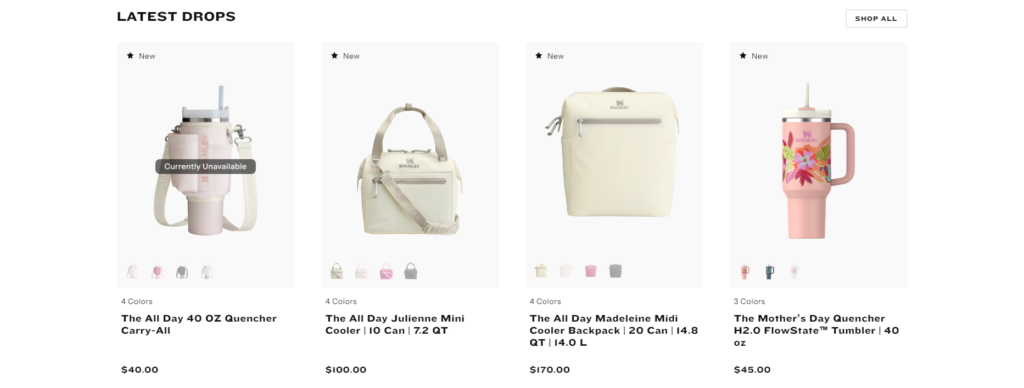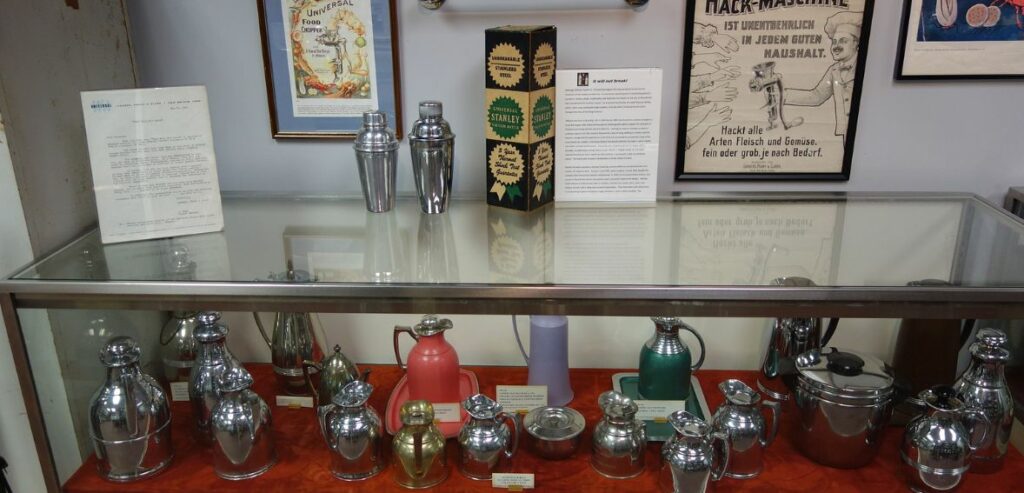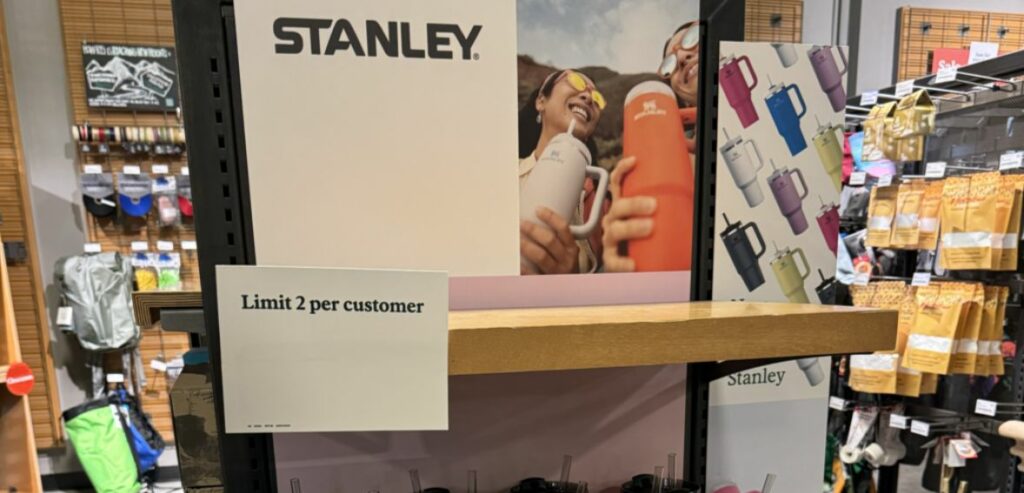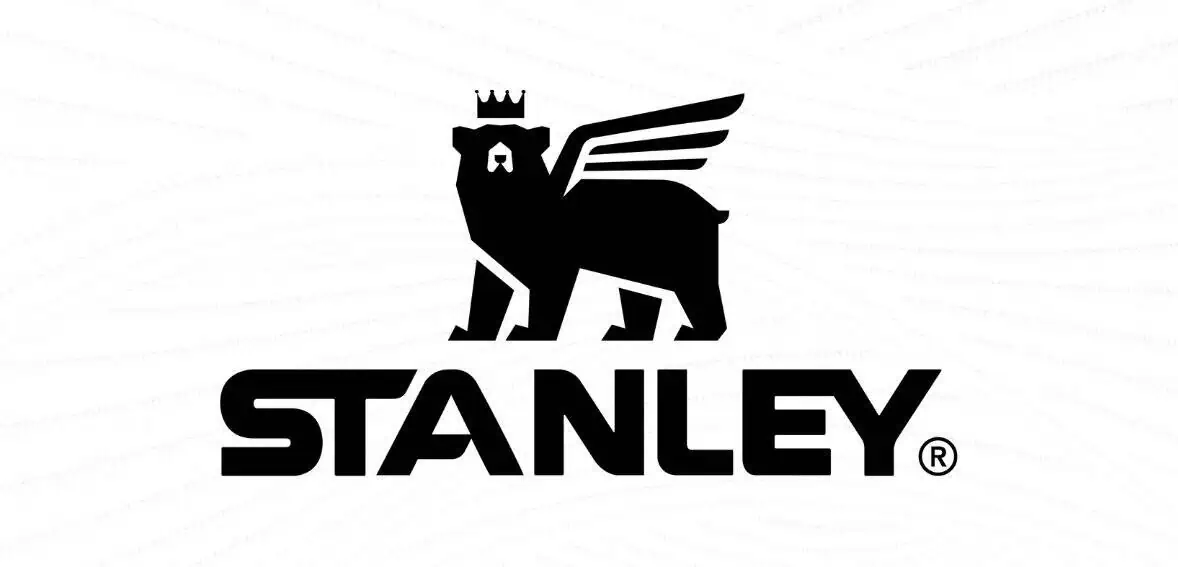Have you ever wondered how Stanley cups, crafted initially for practicality, have become a major trend in recent years? Join us as we explore the Stanley Tumbler sensation, delving into the factors that have propelled its immense popularity. We’ll examine successful marketing strategies and the psychology behind consumer behavior, unveiling how Stanley cups have transcended their role as mere drink containers to become symbols of lifestyle, aspiration, and social status.
The story of the Stanley cup’s rise to widespread acclaim is fascinating, and we’re not discussing hockey here. Instead, we focus on hydration and how Stanley Tumbler has become a cultural icon. Read on to discover more about this intriguing development.
Key Takeaways
- Suburban Sensation: Stanley cups have become universal in suburban areas and college towns, emerging as the season’s must-have accessory, particularly after the 2023 holiday season. Their popularity is fueled by enthusiasts lining up for special editions like the Target “Galentine’s Day” release, showcasing their cups online and garnering admiration from others.
- Legacy of Stanley 1913: Stanley’s strategic rebranding effort in 2016, with the launch of the Stanley Quencher bottle, transformed it into a lifestyle icon and status symbol, even among children. Leveraging social media, affiliate marketing, and influencer endorsements, Stanley successfully redefined its place in the market and secured widespread recognition.
- Convenient Design and Diversification: The convenience of the Stanley cup’s design, coupled with its ability to keep drinks hot or cold for extended periods, has contributed to its popularity for everyday use and outdoor activities. Stanley’s strategic shift towards targeting new demographics, including women and children, has facilitated its growth and expansion into new markets.
- FOMO Marketing and Viral Moment: Stanley’s use of FOMO marketing tactics, such as limited editions and strategic collaborations, has created urgency and exclusivity around its products, spurring sales and generating buzz on social media. A viral video showcasing the tumbler’s durability further solidified the brand’s robust image and boosted sales.
The Stanley Water Bottle: A Suburban Sensation

Across the US, particularly in suburban areas and college towns, the Stanley water bottle has become the season’s must-have accessory. Following the 2023 holiday season, where it emerged as a top gift choice, the Stanley cup has become ubiquitous. Enthusiasts wake up early and line up just for a chance to buy one, and some are willing to spend hundreds on resale platforms to snag special editions like the Target “Galentine’s Day” release. They proudly share their Stanleys online, garnering admiration from others.
When people refer to “a Stanley,” they are talking about a stylish, reusable water bottle from Stanley, a company with a 111-year history of making durable, insulated beverage containers designed initially for WWII pilots and working-class American men. Now targeting a predominantly female audience, Stanley maintains its longstanding promise: its tumblers keep drinks at the desired temperature—hot drinks stay hot, and cold drinks stay cold. The particularly popular pinks and greens are available in various sizes and colors. The most sought-after models are the 40-ounce “Quenchers,” notable for their robust handles.

Image source
After all, Stanley’s achievement seems almost too good to be true. The specific reasons behind the 111-year-old company’s more than 10-fold revenue increase—from $73 million in 2019 to a projected $750 million in 2023—never seem to escape the analysis that is written about it.
Certainly, the tumbler’s features were helpful. The straw top allows users to sip with just one free hand, the bottle’s tapered design fits comfortably in a car cupholder, the handle makes the vessel easier to handle, and the vacuum insulation keeps drinks hot or cold for up to nine hours. Perhaps combining these characteristics was the magic ingredient that increased Stanley’s revenue by billions.
However, other knockoff cups also have all these characteristics. Based on the quality of the counterfeit, it was not difficult to imitate the well-known product. The intangible elements of Stanley’s tumblers were more important to its success than their physical attributes. Superior water bottles have long been fashionable status symbols (yes, there is such a thing as a legitimate market category). By definition, anyone ready to spend between $50 and $90 on a bottle has a lot of extra money, or at the very least, someone who wants to be perceived as having extra money.
The Legacy of Stanley 1913

Since its inception in 1913, the Stanley brand has become a hallmark of robust, high-quality thermoses and drinkware for over a hundred years. Favored by blue-collar workers and outdoor aficionados, Stanley has long been a beloved and prominent name within its specialized market.
Yet, Stanley Tumblers were not gaining traction among broader consumer groups, and they were overshadowed by competitors like Hydro Flask, RTIC, or Yeti in an ever-complicated market. Despite delivering products of superior quality, Stanley found itself at a disadvantage. In response to these challenges, Stanley initiated a strategic rebranding effort to redefine its place in the market and secure the recognition and market share it merited.
In 2016, Stanley 1913 launched the Stanley Quencher bottle. It took a while to catch on, but by late 2023, the Quencher had transcended its status as just another product, becoming a lifestyle icon and a status symbol, even among children.
The turnaround began with a pivotal partnership. In 2019, after initially deciding to discontinue the Quencher due to sluggish sales, a serendipitous encounter with e-commerce blogger Ashlee LeSueur changed everything. She was allowed to buy and resell a large batch of tumblers, leading to a staggering 5,000 Quenchers selling out in just a few days! This marked the start of the Quencher craze.
Since then, the Quencher has dethroned the classic Stanley bottle as the company’s bestseller. Stanley leveraged social media to amplify its reach, creating a vibrant community around the product. Hashtags like #stanleycup and #stanleytumbler became trending topics, especially on TikTok, a hotspot for Quencher fans.
Moreover, Stanley expanded its marketing strategy to include affiliate and influencer marketing, ensuring influencers who resonated with their target audience showcased their products. The impact of user-generated content was also significant, with authentic stories and endorsements from real users bolstering the Quencher’s presence across various social platforms.
A Look Behind the Genius/Luck of Stanley Tumbler

- Convenient Design:
No one appreciates a cumbersome cup that holds too little water. In stark contrast to earlier models, the Stanley cup emerges as the quintessential hydration vessel. It boasts a slender base that fits most cup holders seamlessly.
The Stanley Quencher Tumbler can accommodate up to 40 ounces of water, enabling users to stay hydrated conveniently throughout the day. Stanley products come in various capacities, so it’s advisable to select a size that suits your hydration needs before making a purchase.
- Leveraging User-Generated Content:
Understanding the impact of user-generated content, Stanley has actively encouraged its customers to post their personal experiences and use branded hashtags on social media. This strategy has fostered a community atmosphere among Stanley users, enhanced the brand’s visibility, and provided prospective customers with the social proof necessary to trust in the quality of Stanley products.
- Diversification:
Stanley’s strategic shift from focusing solely on blue-collar workers and outdoor enthusiasts to embracing markets that include women and children exemplifies how exploring new demographics and expanding product lines can facilitate growth. This serves as a valuable lesson for small businesses about the importance of venturing beyond familiar territories to uncover fresh opportunities.
- Insulation for Iced and Hot Beverages:
With a Stanley cup, your morning coffee remains steaming hot; these products maintain hot temperatures for seven hours. Additionally, iced beverages stay cold for up to four hours longer, an advantage that spares your tables from condensation rings.
Thanks to these impressive features, Stanley cups are ideal for staying hydrated during road trips and outdoor activities, as well as for everyday use at home or in educational settings. Whether you favor ice-cold refreshments or piping hot beverages, the stainless steel Quenchers from Stanley are designed to satisfy your drinking preferences in any setting.
- FOMO Marketing
The fear of missing out (FOMO) is more than a psychological phenomenon; it’s a pivotal component of Stanley’s marketing strategy. Stanley has perfected the art of creating urgency- a marketer’s dream by offering limited editions, engaging in strategic collaborations, and announcing frequently sold-out releases. This approach has seen Stanley cups flying off shelves at an unprecedented rate.
Exclusivity is a potent marketing lever, and Stanley has leveraged it with great finesse. By making specific products or colors available only for a limited period, Stanley has not only spurred sales and generated buzz on social media but also made ownership of a Stanley cup akin to entry into an exclusive club. This sense of scarcity and uniqueness enhanced the allure of the Stanley cup and played a crucial role in the company’s explosive growth—from $75 million to an impressive $750 million in sales in 2023 alone.
- The Viral Moment
Stanley’s resurgence peaked with a serendipitous event: a viral video. The footage displayed a Stanley tumbler miraculously surviving a fall from a moving car, highlighting the product’s remarkable durability and solidifying the brand’s robust image. The video spread like wildfire across social platforms, dramatically boosting brand recognition and sales.
Why do Consumers Rush to Buy Certain Products? Understanding the Psychology
Labeling a product as “exclusive” or “limited edition” or restricting its availability taps directly into consumer psychology. Declaring an item as limited can elevate its perceived value, not necessarily its actual monetary worth. This phenomenon is linked to the notion that we desire what we cannot easily have and dislike restrictions on our choices. For example, many consumers justify purchasing high-quality Stanley cups because the purchase seems justified if you use them daily and value each use at one dollar.
Plus, when a product is marketed as a “limited edition,” companies effectively create a sense of urgency. This urgency heightens the fear of missing out, which can be more distressing than regret over a purchase that didn’t meet expectations.
Upon reflection, we often regret what we didn’t do more than what we did. This mindset fuels the initial rush to acquire limited items. However, once the excitement fades, it’s common to reevaluate the necessity of such purchases. This urgency creates a whirlwind of excitement and buzz, resembling a snowball effect. Eventually, it leads one to wonder how things escalated so quickly.
About Stanley 1913
Stanley 1913 is a company focused on crafting and distributing various drinkware and cookware. Their offerings encompass vacuum bottles, mugs, thermoses, and various accessories, including replacement parts.
Known for their robust durability, Stanley 1913 products feature double-walled vacuum insulation that effectively maintains the temperature of beverages, whether hot or cold, for extended durations. Among their products is the Adventure Quencher Travel Tumbler, designed to enhance the drinking experience with a reusable straw, making it ideal for enjoying your favorite beverages on the go.
Conclusion
The viral success of the Stanley Tumbler underscores strategic marketing, consumer psychology, and product innovation. From its utilitarian origins, the tumbler has become an essential cultural icon and lifestyle. Key to its acclaim are its convenient design, superior insulation, and the fostering of a vibrant user community. Diversification into new demographics and FOMO marketing tactics have propelled Stanley’s exponential growth. Stanley taps into consumer desires by leveraging exclusivity and urgency, driving demand. A stroke of viral luck further bolstered its ascent. In 120 words, Stanley Tumbler’s journey from practicality to cultural phenomenon exemplifies modern marketing and product development.

